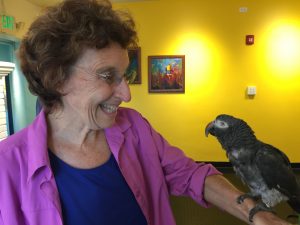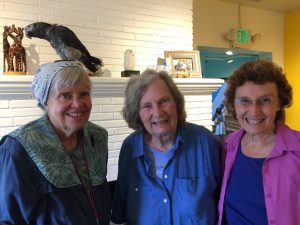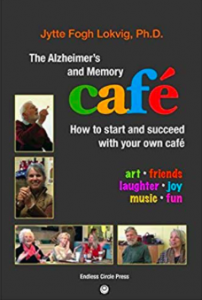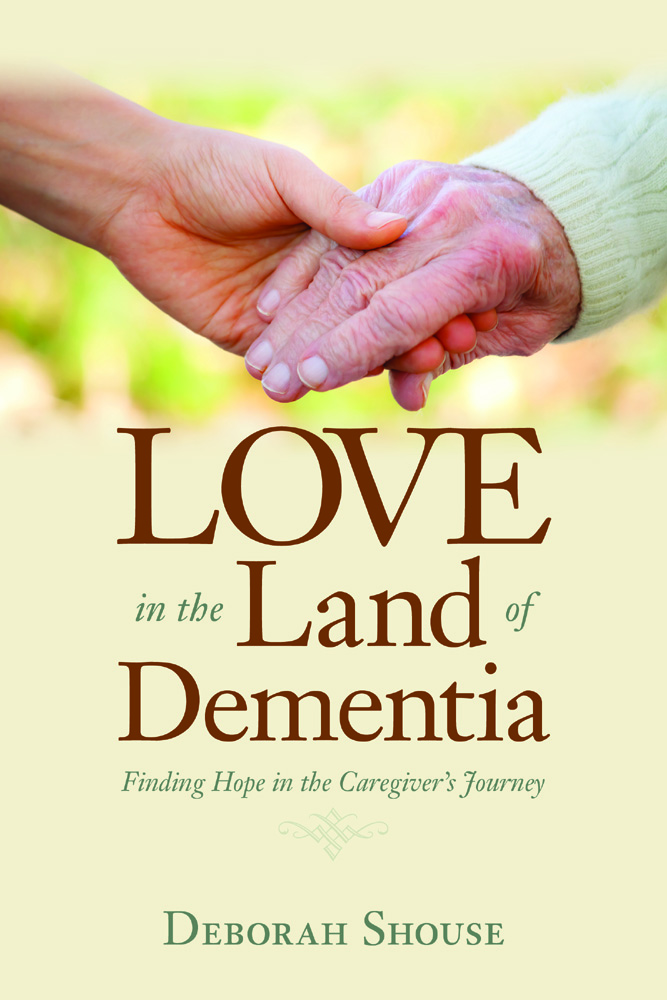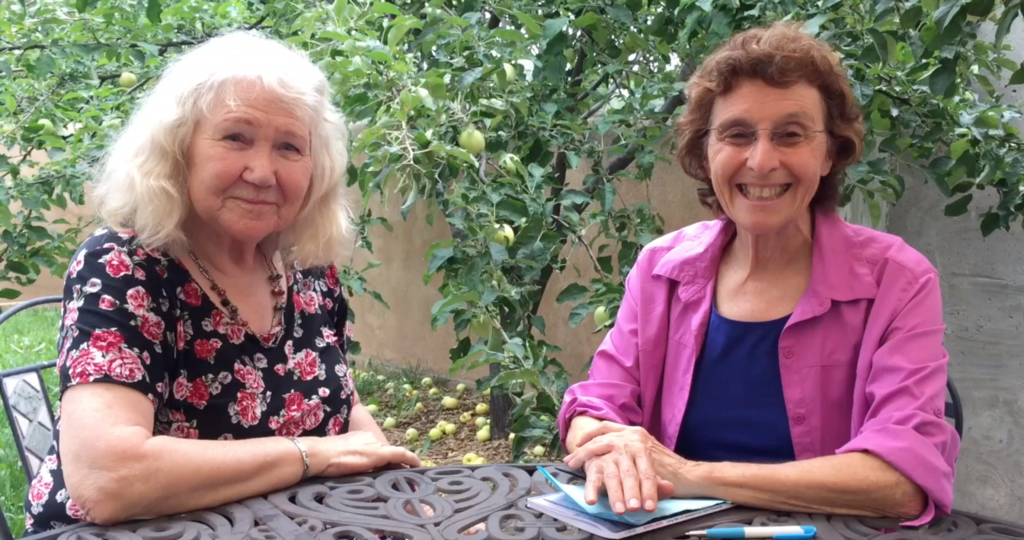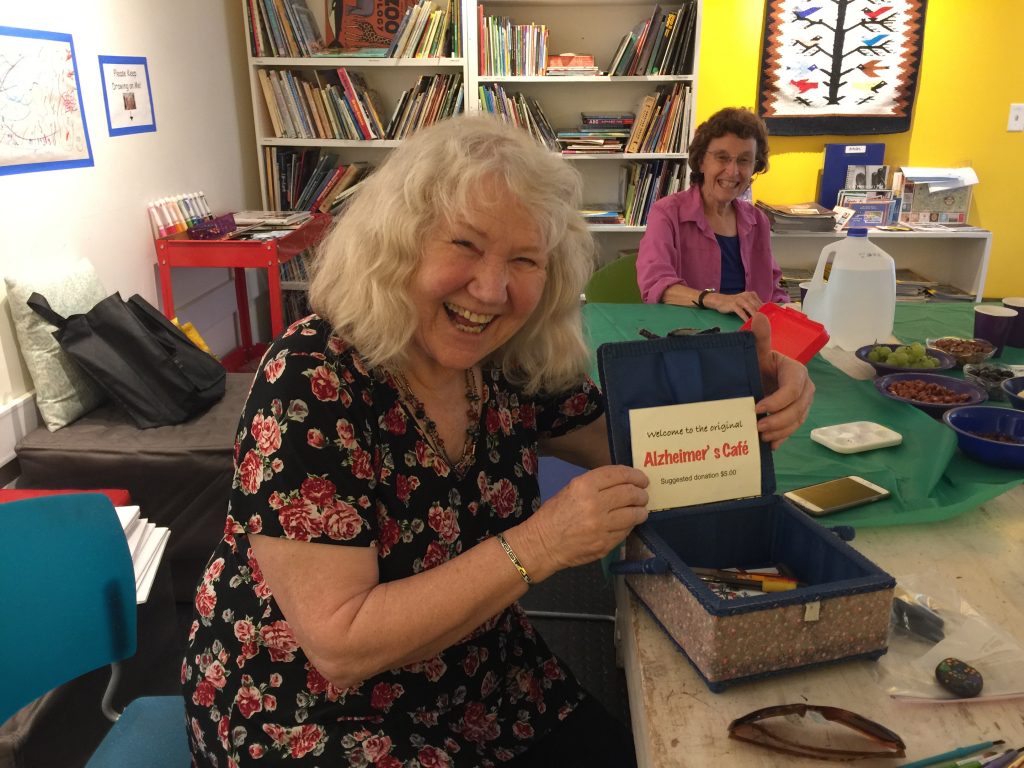Posts Tagged ‘Jytte Lokvig’
Pick the Best Care Community for Your Loved One
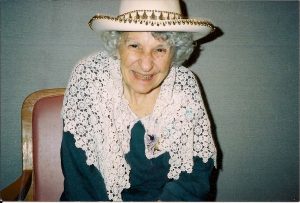
My hands were sweating as Mom, Dad, and I entered the memory care unit. We desperately wanted to pick the best care community for my mother. Pam, the head nurse, rushed towards us, arms outstretched.
“So good to see you again,” she told my father and me. She turned to Mom. “And you must be Frances. Paul has told me so much about you. I hear you’re a nurse too.”
She took Mom’s arm and they walked together down the corridor, talking. We followed and Pam stopped at a small dining area, where coffee and cookies, chocolate chip, one of Mom’s favorites, awaited us. Dad and I looked at each other and smiled. Maybe, just maybe, this was going to be all right.
We had already visited several homes and none of them seemed warm enough, caring enough, or quiet enough for Mom. What had won us over was Pam and her feeling for people who were living with memory loss, her determination to create community, her compassionate and easy way of communicating.
#
One of the most challenging experiences caregivers can face is finding the right community when your loved one needs care. Jytte Lokvig, PhD, regularly consults with families on this issue. Her new book, Moving & More, offers families concrete guidelines for finding the facility that meets their needs.
Click here to see our interview with Jytte Lokvig
When visiting a care community, Jytte suggests that we ignore the lobby and the landscaping. A beautiful lobby soothes the family’s soul but has little to do with the quality of care and engagement offered. Spend at least a couple of hours in memory care.
“Remember,” she says, “you are asking your loved one to live here. Stay on after your tour and blend into the scenery, so you can really get a sense of how staff and residents interact.”
Here’s what you want to learn:
- Does the facility practice “Person centered-care?
- Do residents participate in menu and activity choices?
- What is the staff/resident ratio?
- What are the staff retention rates?
- Do all staff receive mandatory first aid and dementia training?
- Are the family, nurse, personal care and activity staff involved in creating the resident’s care plans?
- Does the activities calendar offer a blend of entertainment and interaction?
- Are there both individual, small group, and large group activities?
- Does the staff acknowledge each resident, even with a simple greeting or compliment?
After you have a sense of the community, take your loved one to visit. Have a meal with the residents. Stay for an activity program.
“Several visits like this helps both of you feel more comfortable when the move comes,” Jytte says.
For more tips and information, visit Jytte’s site at http://www.alzheimersatoz.com and consider her book: Moving and More.
Deborah Shouse is the author of Connecting in the Land of Dementia: Creative Activities to Explore Together and Love in the Land of Dementia: Finding Hope in the Caregiver’s Journey.
Dementia Friendly Cafes: Inviting Creativity and Connection
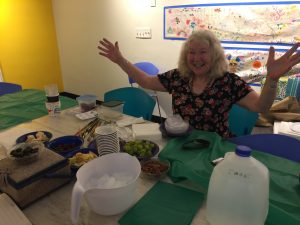 More than 10 years ago, Jytte Lokvig, PhD, was scanning the internet for additional information about dementia. On one of her Google searches she saw the words “Alzheimer’s Cafe” posted by Dr. Bere Miesen, who founded the first Alzheimer’s cafe in Leiden, the Netherlands in 1997. That phrase electrified her. She leapt out of her chair, much to the dismay of her cat, who was cozily sleeping across her feet, and declared, “I am going to make that happen in the U.S.!” She’d been working with people who were living with dementia in community settings for some years, orchestrating art, music, craft and other meaningful projects. But she felt something was missing. That something, she realized, was engagement in the community.
More than 10 years ago, Jytte Lokvig, PhD, was scanning the internet for additional information about dementia. On one of her Google searches she saw the words “Alzheimer’s Cafe” posted by Dr. Bere Miesen, who founded the first Alzheimer’s cafe in Leiden, the Netherlands in 1997. That phrase electrified her. She leapt out of her chair, much to the dismay of her cat, who was cozily sleeping across her feet, and declared, “I am going to make that happen in the U.S.!” She’d been working with people who were living with dementia in community settings for some years, orchestrating art, music, craft and other meaningful projects. But she felt something was missing. That something, she realized, was engagement in the community.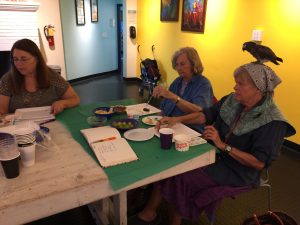 From that inspiration, Jytte created the original U.S. Alzheimer’s Cafe in Santa Fe, NM in 2008. Ten years later, there are more than 300 cafes in the US that invite creativity and connection through dementia friendly cafes.
From that inspiration, Jytte created the original U.S. Alzheimer’s Cafe in Santa Fe, NM in 2008. Ten years later, there are more than 300 cafes in the US that invite creativity and connection through dementia friendly cafes.  “Would you like a round plate of a square one?” she asked.
“Would you like a round plate of a square one?” she asked.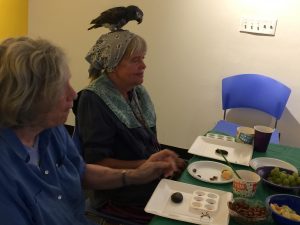
- Arrange a few snacks.
- Invite a guest or two, if you wish. This is an intergenerational project.
- Put a brightly colored plastic covering on the table.
- Squeeze some acrylic paint into a palette. Or use tempura or water colors.
- Offer a choice between two brushes.
- Offer a choice between two canvases: a cardboard paper plate, a river rock, paper, or other.
- Relax and let the painting unfold.
- If your loved ones need a little help, you can paint together. Or you can rest their hand on yours, while you paint to get them used to the movement of the brush.
- Appreciate the art by commenting on the color, the design, the shapes. Don’t ask them to identify the art: enjoy it as it is.
- Weave conversation into your time together.
